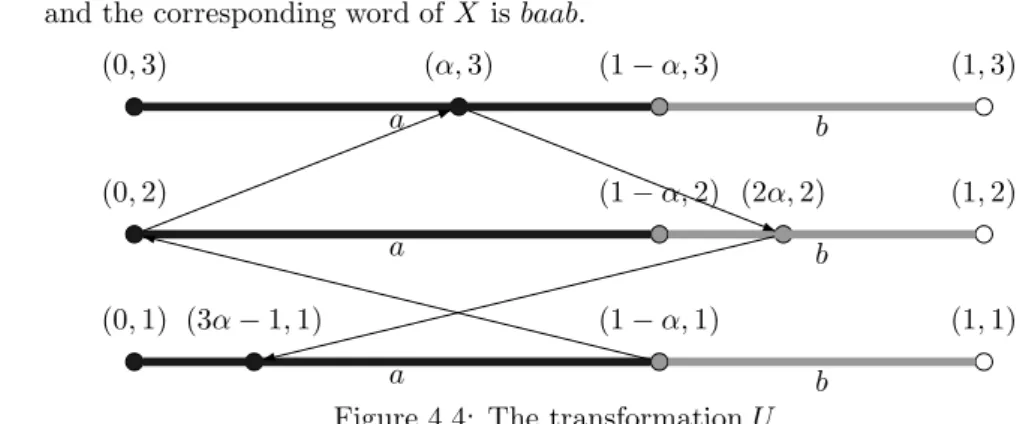Bifix codes and interval exchanges
Texte intégral
Figure




Documents relatifs
We apply it to build a wide assortment of explicit examples on four intervals having different dynamical properties: these include the first nontrivial examples with
We discuss the relation with bifix codes and we show that the class of regular interval exchange sets is closed under decoding by a maximal bifix code, that is, under inverse
We apply it to build a wide assortment of explicit examples on four intervals having different dynamical properties: these include the first nontrivial examples with
We remark that our self-dual induction algorithms for aperiodic interval exchange trans- formations generate families of nested clustering words with increasing length, and thus may
The proposed approach uses interval arithmetic to build a graph which has exactly the same number of connected components than S.. Examples illustrate the principle of
theoremNormal 812 Theorem 7.1 The family of uniformly recurrent tree sets is closed under max- imal bifix
Using a criterion due to Bourgain [10] and the generalization of the self-dual induction defined in [18], for each primitive permutation we build a large family of k-interval
The relation between AR6 interval exchanges and underlying AR3 symbolic systems was par- tially tackled in [3], though only in the particular case of Tribonacci, and with a certain